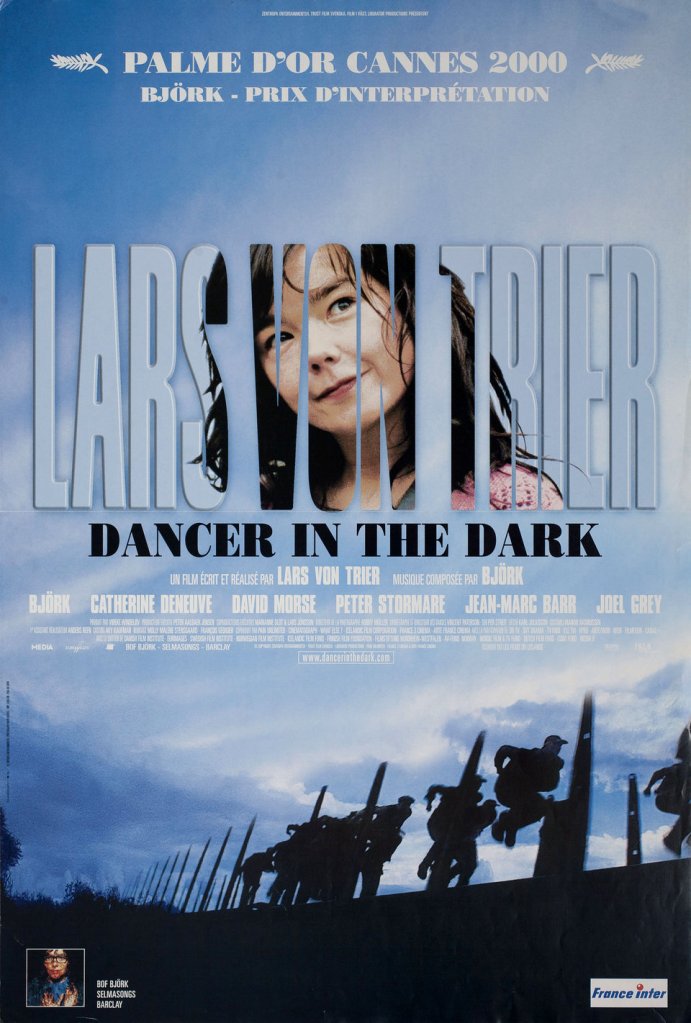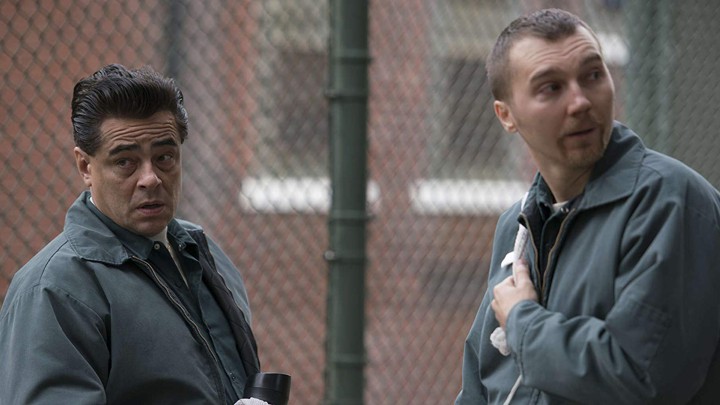CLASSIC FILM REVIEW: DANCER IN THE DARK (2000)
Directed by: Lars von Trier
Produced by: Peter Aalbæk Jensen, Vibeke Windeløv
Written by: Lars von Trier
Cast: Björk, Catherine Deneuve, David Morse, Peter Stormare, Joel Grey
Music by: Björk
Cinematography: Robby Müller
Edited by: François Gédigier, Molly Marlene Stensgård
***MAY CONTAIN SPOILERS***

Rather incredibly, until very recently, I had never seen DANCER IN THE DARK (2000). However, it has quickly gone up the ranks in my mind as one of the best musical films I have ever seen. Having given it a lot of thought, it was difficult to place my review of Lars Von Trier’s eccentric, magical and moving tragedy. I could have reviewed it as a cult or under-rated classic film, but it was too high profile really; AND it won the Palm D’Or at Cannes. Thus, I decided, because it is such a compelling story and told in a magnetically creative style it definitely qualifies as a classic film.
Set in Washington State, circa 1964, the story centres on the life of Selena Ježková (Bjork), a Czech immigrant, who works in a factory supporting herself and her teenage son, Jean. She is good friends with co-worker Kathy (Catherine Deneuve), and has a good relationship with her landlord, a police officer called Bill (David Morse), and his wife, Linda (Cara Seymour). Selena is also romantically pursued by Jeff (Peter Stormare). Yet despite him being a pleasant and easy-going guy she prefers to be just friends. Selena is an admirable character because she works round-the-clock with at least two jobs, striving to make ends meet. But she also hides a secret. She is, in fact, going blind. Kathy helps cover for her where she can at the factory, however, the condition is irreversible. Selena is extraordinarily brave, but foolhardy too. Her condition puts herself and factory productivity at risk. Yet, this is merely a suggestion of the drama and tragedy which later befalls her. Because someone close to her will betray a trust, setting in motion a series of extremely depressing eventualities.

In order to escape the trials of her everyday existence, Selena often daydreams in song and dance form. These fantasies are further contextualised by Selena and Kathy taking part in a town production of THE SOUND OF MUSIC, plus their visits to the cinema to watch Hollywood musicals. Von Trier is careful though to establish verisimilitude and plausible reality prior to the first musical number. Even so, it is initially extremely jarring when the song begins. Nonetheless, the power of surprise provides an electrical surge to the narrative and Selena’s characterisation. The first number set in the factory finds the mechanical sounds of the machinery providing a metronomic rhythm to the song and dance routine. Furthermore, songs such as, I’ve Seen It All (with the sequence set on a locomotive), and Smith and Wesson link Selena’s character to metal, machines and American industrialisation. Essentially, Selena’s experiences as a working class immigrant find her attempting to escape via song, but being trapped by American machines and later on in the film, their justice system too.
Filmed on digital cameras the presentation is arguably inspired somewhat by Von Trier’s established Dogme 95 style. In terms of content, DANCER IN THE DARK (2000), combines elements of melodrama and film noir reminiscent of films by Douglas Sirk. Such thematic and visual cues are then filtered through a meta-textual inversion of the Hollywood musical. While the classical musical is all about joy, love, family, companionship, song and performance, Von Trier effectively represents these genre tropes, but twists them into calamitous trials and tribulations for Selena. I for one felt such pain, regret and sympathy for her character. Indeed, Bjork, who had never acted before and has rarely acted since, gives an incredibly moving and soulful performance as the dedicated mother only trying to do her best for her son. Similarly, the songs she co-wrote with Mark Bell, Sjón Sigurdsson and Lars von Trier, sparkle and spike and tug at the heartstrings passionately.
Lars Von Trier is a divisive filmmaker and personality. He has always sailed close to the wind in regard to his challenging filmmaking style and content, as well as causing dissension over the years with his perceived outrageous comments. Moreover, Bjork herself spoke openly about a “Danish filmmaker” who oppressed and harassed her persistently on set. One must deduce that this indeed was Von Trier, thus I must respect and sympathise with the anguish she felt while filming, DANCER IN THE DARK (2000). Lastly, reviews of the film at the time were equally dichotomous. Peter Bradshaw of The Guardian dubbed it the: “most shallow and crudely manipulative film of 2000. . . and one of the worst films, one of the worst artworks and perhaps one of the worst things in the history of the world.” Yet, Roger Ebert of the Chicago Sun-Times stated: “It smashes down the walls of habit that surround so many movies. It returns to the wellsprings. It is a bold, reckless gesture.” Personally, I am with Roger Ebert, as I found the film to be one of Lars Von Trier’s most emotionally moving, stylistically daring and human dramas.





